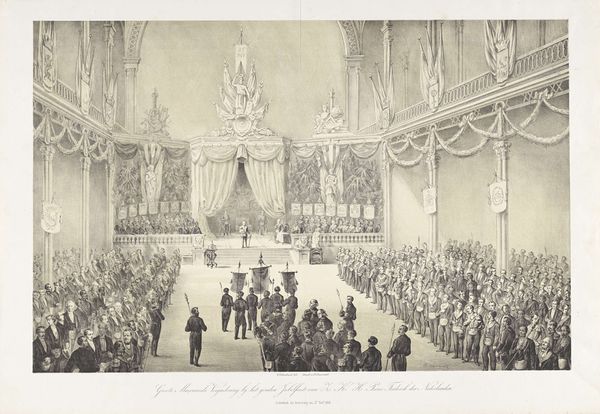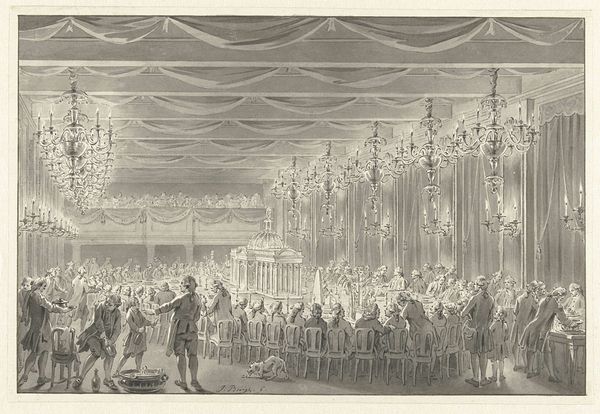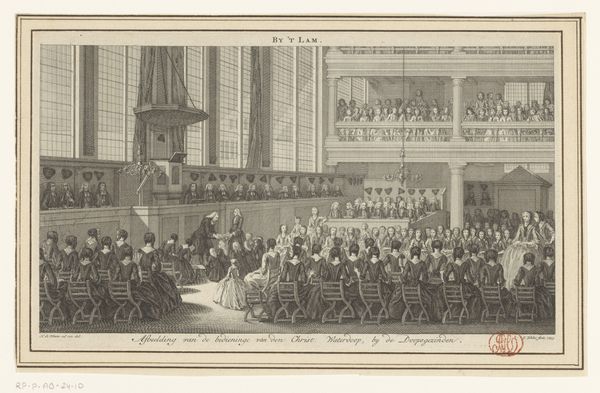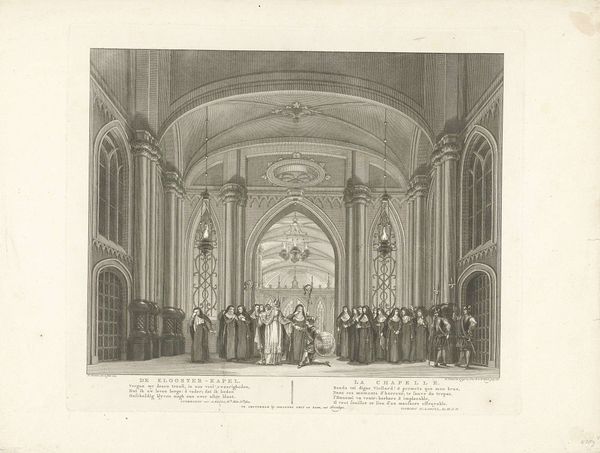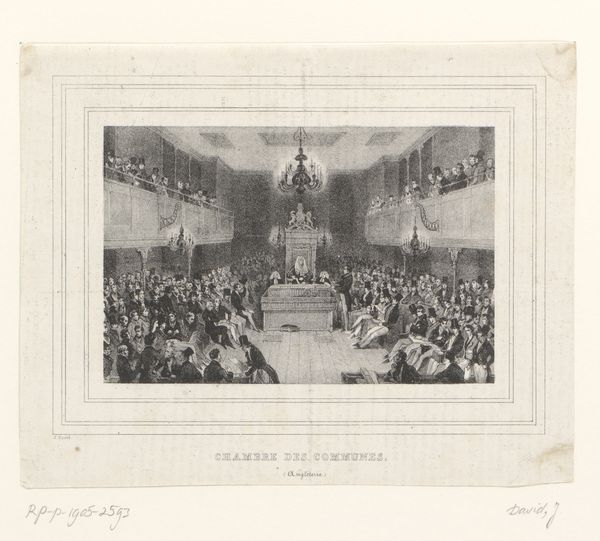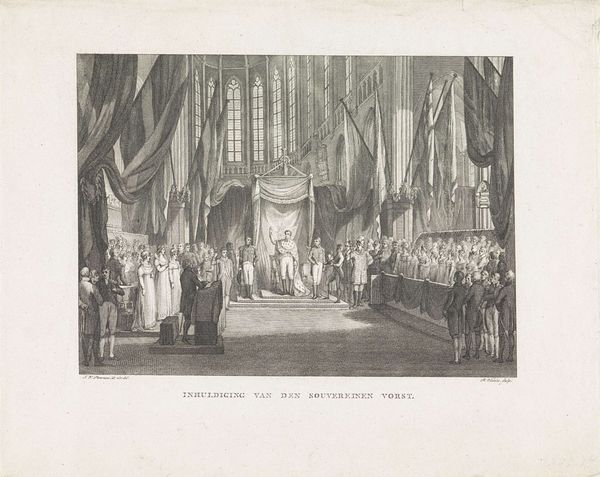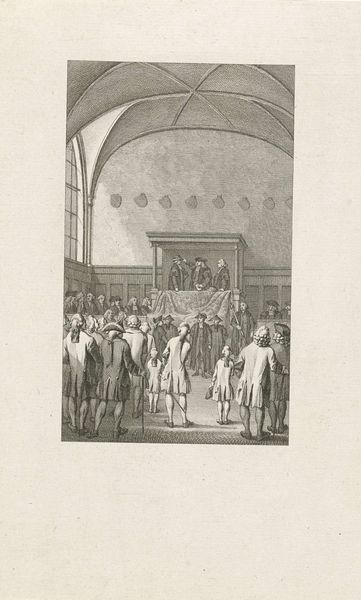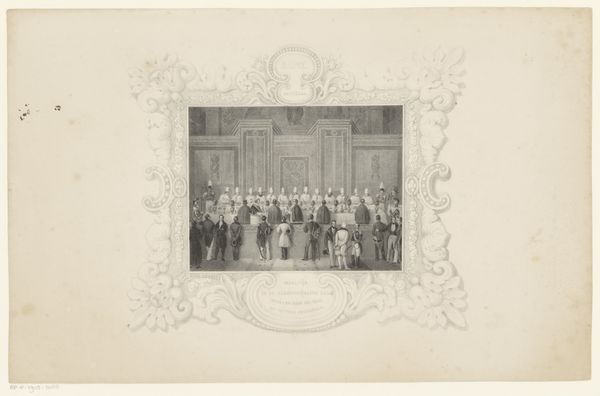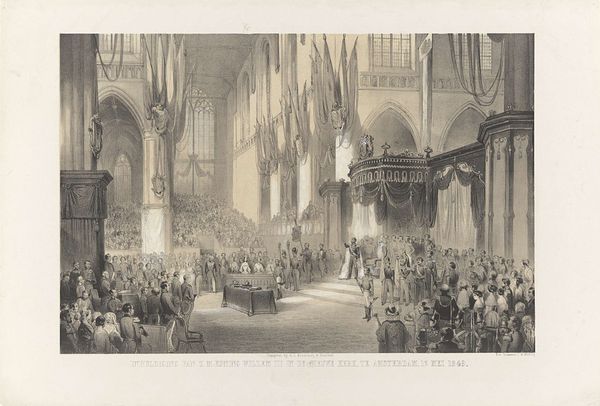
Inhuldiging van Z.M. als Koning der Nederlanden enz. enz. enz. in de Nieuwe kerk te Amsterdam, den 28 November 1840 1841
0:00
0:00
carelchristiaanantonylast
Rijksmuseum
print, engraving
#
portrait
#
neoclacissism
# print
#
historical photography
#
group-portraits
#
history-painting
#
academic-art
#
engraving
#
realism
Dimensions: height 243 mm, width 428 mm
Copyright: Rijks Museum: Open Domain
Curator: Here we have a print titled "Inhuldiging van Z.M. als Koning der Nederlanden enz. enz. enz. in de Nieuwe kerk te Amsterdam, den 28 November 1840," created in 1841 by Carel Christiaan Antony Last. Editor: It’s vast, isn't it? All those figures, the sheer number suggests power and legitimacy, and from what looks like an engraving. I wonder about the labour invested in creating this multitude? Curator: Precisely! It's a fascinating document of its time. These types of depictions of royal inaugurations were vital tools to bolster the image of the monarchy and communicate political legitimacy. The scale echoes the pomp of the event. It’s academic art functioning as historical painting. Editor: Looking at the staging, the careful placement of each person, one has to admire the engraver's craft. Replicating such detail on a metal plate, line after line, reveals skill and commitment to production, particularly when we consider this engraving would have circulated among a wide audience. Did that impact the choice of such a traditional medium? Curator: Undoubtedly. Printmaking allowed for widespread dissemination, carefully curated for a middle-class audience seeking access to events like this that defined their national identity. These were deliberately composed and distributed images influencing how people saw the monarchy's role in society. Editor: And note how this dissemination through print flattens everything – power itself, but also the unique qualities of an artistic "masterpiece." Here the ritual performance, meticulously rendered with line and burin, transforms readily into something reproducible, purchasable even. One wonders about access to different materials among artists back then. Curator: It also demonstrates a shift away from older forms of aristocratic patronage towards a burgeoning public sphere. This image doesn't just celebrate the King; it celebrates the idea of the Netherlands as a unified, modern nation-state. Note the Neoclassical elements employed that speak to the creation of order and hierarchy that reinforces that aim. Editor: It's intriguing how the pursuit of order involves meticulous production – translating something ephemeral into a static, tangible item and in bulk. Thinking about how printmaking democratized the consumption of imagery back then… Curator: Indeed. And considering how it contributed to shaping a shared historical consciousness, solidifying political power, as well, of course, as creating avenues for commercial activity connected to monarchy and nationhood. Editor: Well, looking closely really emphasizes the labour and material transformations underlying these moments of statecraft and carefully composed performance. Curator: I agree. Understanding this piece is grasping a small thread of the complex web of power, representation, and identity interwoven in the Dutch national narrative.
Comments
No comments
Be the first to comment and join the conversation on the ultimate creative platform.
